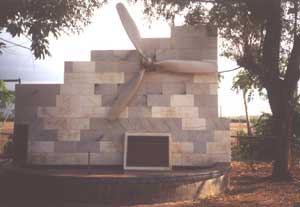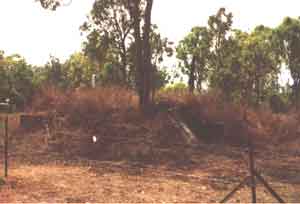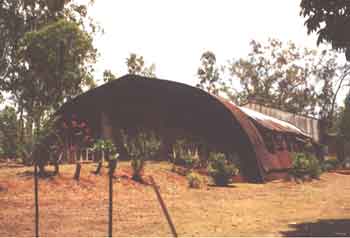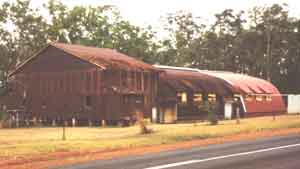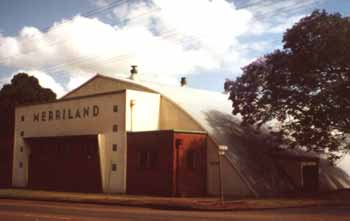Cairns and the Atherton Tableland
by Allan H. Kelly
In October 2000, I travelled with my parents around Cairns and the Atherton Tableland to view the sites of WW II campsites and airstrips. Here is the story of that trip.
With the onset of the war in the Pacific, Australia became an important base for allied forces devoted to turning the tide of Japanese expansion. In particular, Far North Queensland (FNQ) saw the establishment of airbases, army camps and training areas and the improvement of existing port facilities in the areas of Townsville and Cairns.
Cairns was used as a base for the RAAF's 11 and 20 Catalina Squadrons which flew 3000-odd sorties. An impressive monument to this effort can be found at the beachfront near the hospital. Nearby Trinity Bay was the site of amphibious training conducted by the US Army's 532nd Special Engineer Unit and at Palm Cove along the beachfront there is a memorial plaque to this activity. There is also a memorial to Maj. Gen. Vasey, CG 7th Australian Division, who along with ten others was killed when a RAAF Hudson crashed into the water on approach to Cairns.
South of Cairns is Gordonvale where the USA 503rd Parachute Infantry Regiment was camped before jumping onto Nadzab, and later Noemfoor and Corregidor. Part of the local tennis courts uses the concrete floor of the parachute packing sheds. A plaque on the Club wall commemorates this, and another plaque at the nearby library remembers the great time the 503rd had in the town. A marker near the roundabout on the road coming down from the Gillies Range identifies their campsite. The Gillies Highway, in those days a single lane road, was a main supply route to the camps up on the Tableland.
Inland, the Atherton Tableland was home to about 43,000 troops at any one time, with a peak of 100,000. In particular the Australian 6th, 7th, and 9th Divisions camped and trained there, and there were two huge hospitals at Rocky Creek (2/2nd and 2/6th Army General Hospitals (AGH)). Despite the huge army presence, within about five years after the war, little remained of the camps.
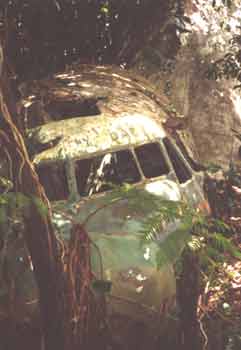 Dakota
Wreck
Dakota
Wreck
In Kuranda, a popular tourist destination
a few minutes drive from Cairns, there is a staged wreck of a Douglas Dakota.
This aircraft served in the USAAF, RAAF and with civil airlines before becoming
a prop in a movie, and ending up here in its final resting place. It
variously carried markings "Geronimo," 41-38558 and VH-AEO. In a huge coincidence,
my mother had flown on this aircraft several times when she was an air hostess
with Trans Australia Airlines in 1952-53.
Kuranda also provided the opportunity to ride on land and in water in one of the ten WWII vintage amphibious DUKW trucks operated by the Rainforestation tourist attraction.
Sid
Beck Military Museum
We visited Mareeba next, where Sid
Beck has established a private military museum, The Beck Museum. Amongst other things, Sid has
an ex-RAAF Dakota.
We subsequently learned that my father, Robert H. Kelly, had flown as the radio operator in Sid's Dakota between 1947 and 1964 on supply runs throughout Southeast Asia!
Also in Sid's colleciton is the P-2V Neptune, and a P-39 from Cape York flown by Lt Faletta, and crash landed after losing direction and running out of fuel. Another aircraft from the flight resides in Innisfail, south of Cairns). In the armoured vehicle arena, there is a rare operational LVT4 Buffalo, a fully restored M3 Stuart, a Cletrac airfield tractor, Centurion, Matilda,
Another rare item is an Isuzu Type 98 6 ton prime mover Ro-Ke one of only about three in the world today. The museum is well worth a visit.
